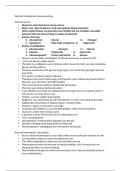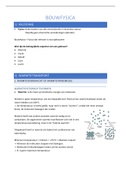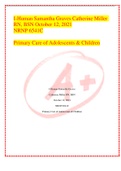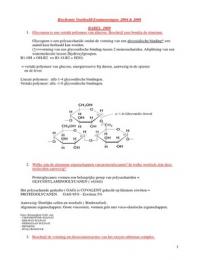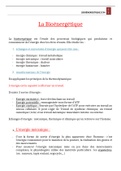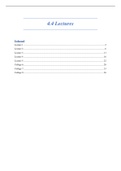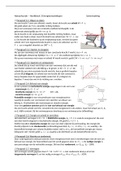BANK by Carolyn Jarvis, Verified Chapters 1 - 31, Complete
Newest Version
What are the two layers of the skin? - ANSWER: Dermis & Epidermis
The layer of tissue that resides underneath the dermis is called the _________ layer.
- ANSWER: Subcutaneous
The subcutaneous layer is made up of what type of tissue? - ANSWER: Adipose
This characterizes what layer of tissue? Thin, tough layer with tightly bound cells into
sheets forming a rugged protective barrier; stratified into several zones - ANSWER:
Epidermis
Which layer of the epidermis forms new skin cells? - ANSWER: Basal
Major component of the epidermis, tough, fibrous protein. - ANSWER: Keratin
Melanin producing cells - ANSWER: Melanocytes
Outer layer of epidermis, consists of dead keratinized cells closely packed. -
ANSWER: Horny cell layer
True or False? The epidermis is avascular and receives its nutrients from blood
vessels in dermis. - ANSWER: True
Where is skin thicker? - ANSWER: Palms & Soles
What are the three sources of skin color? - ANSWER: 1) Melanin (brown pigment)
2) Carotene (Yellow-orange)
3) Vascular bed (red-purple)
Which tissue layer is the inner supportive layer made up of connective tissue
(collagen)? - ANSWER: Dermis
Vellus Hair - ANSWER: Fine, faint hair which covers most of the body
Terminal Hair - ANSWER: Darker, thicker hair which grows on scalp, eyebrows and
pubic area, axillae, face, chest (on men after puberty)
Secreted lipid substance for protection which oils and lubricates the skin and hair
and forms an emulsion with water that retards water loss from the skin. - ANSWER:
Sebum
, Sebaceous Glands - ANSWER: The glands which produce sebum and are located
everywhere except on the palms and soles.
What are the two types of sweat glands? - ANSWER: 1) Eccrine
2) Appocrine
Eccrine Glands - ANSWER: Coiled tubules that open directly onto the skin surface and
produce a dilute saline solution called sweat
Apocrine Glands - ANSWER: Produce a thick, milky secretion and open into the hair
follicles. Located mainly in the axillae, anogenital area, nipples, and navel. Activate
during puberty.
Nails are hard plates of what protein? - ANSWER: Keratin
Cuticle - ANSWER: Works like a gasket to cover and protect the nail matrix
Functions of the Skin: - ANSWER: 1) Protection
2) Prevents Penetration
3) Perception
4) Temperature Regulation
5) Identification
6) Communication
7) Wound Repair
8) Absorption & Excretion
9) Production of Vitamin D
What vitamin does the skin produce? - ANSWER: Vitamin D
Lanugo - ANSWER: Fine, downy hair of the newborn infant. This hair covers most of
the skin by midgestation.
Vernix Caseosa - ANSWER: Thick, cheesy substance made up of sebum and shed
epithelial cells that covers the skin at birth.
Hormonal changes during pregnancy result in increased pigment in the: - ANSWER:
Areolae, nipples, vulva, and somtimes midline of abdomen
Linea Nigra - ANSWER: Known as a pregnancy line, sometimes occurs in pregnant
women. It is a darkened, pigmented line at the midline of the abdomen
Chloasma - ANSWER: Dark spots appearing on the face during pregnancy
Striae Gravidarum - ANSWER: Stretch marks that occur during pregnancy due to
connective tissue developing increased fragility.


